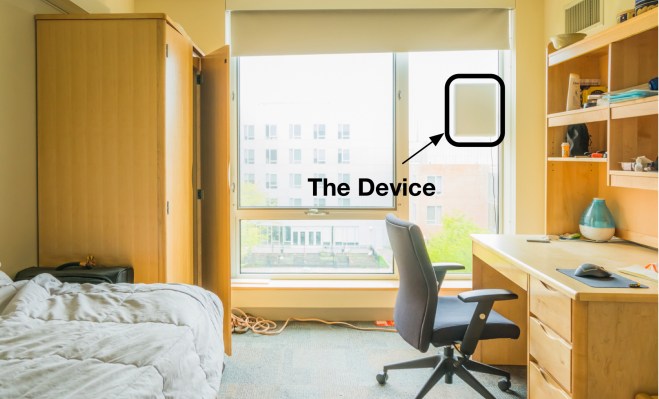MIT researchers have unveiled a new method for wirelessly monitoring sleep. The whole thing works a bit like echolocation — radio waves are beamed off a sleeping subject and changes in the body are detected when they bounce back.
The research is the latest in a number of different activities the team has been monitoring using low-power radio waves. Thanks to new AI technology, the system is now able to translate subtle movement into meaningful information about the subject’s sleep patterns, including sleep stages (light/deep/R.E.M.), movement and breathing rate.
Testing was conducted on 25 volunteers over 100 nights of sleep. Study lead professor Dina Katabi tells TechCrunch that the system was able to detect sleep patterns with around an 80 percent accuracy rate — roughly the same as industry-standard EEG sleep tests.
While little conclusive research has been done on sleep tracking through wearables like Fitbit and the Apple Watch, those products rely almost exclusively on movement detected by an accelerometer to determine sleep patterns.
“Wearables are great, but our vision was to have something we call ‘invisibles,’ ” says Katabi. “It’s a device that disappears into the background of your home, but at the same time, monitors any sort of health problems, just using wireless signals.”
The wireless system takes a much more comprehensive variety of factors into account than wearables, including movement, breathing and pulse rate. It does all that while staying out of the way, placed on a shelf or mounted on a wall a few meters away from the sleeper.
The system uses much less power than Wi-Fi and is robust enough to be used in different locations with different patients, without requiring any recalibration. All of that means it could be ideal for use in monitoring patients at home in their natural sleep setting.
That’s the next step for the system — researching the ways in which sleep patterns impact diseases like Parkinson’s and Alzheimer’s, both of which are linked closely to various sleep disorders. Of course, it’s still early stages, and actually utilizing such a system for public use would require approval from organizations like the FDA. But for now, the results seem promising.
